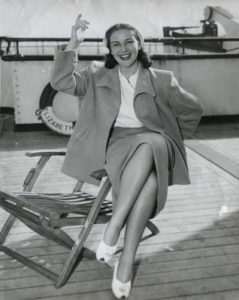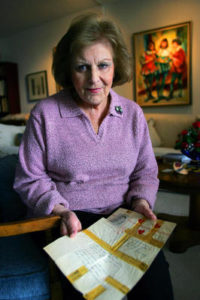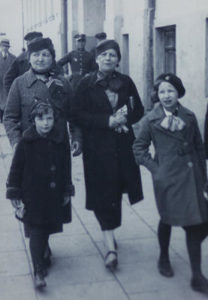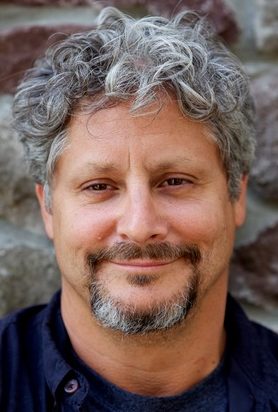By Victor Greto
Nina Kaleska came back to Auschwitz last summer.
With a group of academics and students, she returned to the place she was imprisoned during the height of the Holocaust, the camp at which Nazis killed 1.1 million people during World War II. She had not seen it in more than 60 years.
It’s all rebuilt now, from the rubble Nazis left as the victorious Russians approached. “Sterile,” she says.
Even so, she asked to be alone. For 15 minutes, she walked through some of the buildings and the grounds.
“They cried, I did not,” she remembers. “If you get too emotional, people get uncomfortable.”
Nina Kaleska thinks about the unthinkable every day.

Because there can be nothing unthinkable to a Polish Jew born in 1929 — neither the horrors of losing your parents and sister to systematic extermination, nor the wonder of the kindnesses that helped save her life.
In 1945, 16-year-old Nina Kaleska emerged from more than four years in Nazi Germany ghettos and concentration camps, with a pair of dulled blue-gray eyes that since have learned to see through her past.
“I rarely use the word ‘hate,’” Nina says, limping about her Bala Cynwyd, Pa., apartment just outside of Philadelphia.
“I just can’t stay there, in hate.”
It’s an emotion as dead as the Third Reich, in a way as unthinkable for her to feel as genocide is for many to grasp.
Some of the proof lies in her recently published memoir, “Nelli’s Journey: From the Depths of Evil to Reconciliation and Beyond.”
But most of it lay behind those now-sparkling blue-gray eyes.
“I’m not sure I’m religious, but I believe in something greater than myself,” she says. “When I needed an angel, there was always someone there.”
There was Martha, a nurse at Auschwitz who repeatedly saved her from extermination.
There was Lucien, a 19-year-old concentration camp guard at Retzow, forcibly drafted into the German Army, who fell irrecoverably in love with her.
Although she later weathered two failed marriages after migrating to the U.S. in 1950, others pushed her along at key moments in her life.
Today, Nina laments the pain of a recent surgery on the rotator cuff of her right shoulder; she warily anticipates hip replacement surgery on her 77-year-old body.
But her hard-earned perspective easily lodges her aging physical woes in a life canvas crowded with experience.
Her right hip will be replaced on Tuesday, which is Holocaust Remembrance Day.
Her history remains bound with world news, but she often feels removed from it. Germany’s recent announcement that it would allow access to up to 50 million Nazi-era documents about 17 million victims brought only a passing interest.
“The Holocaust is not a Jewish subject,” she says. “It’s universal. It’s still happening.”
Parts of her memoir — as do many memoirs that detail the experiences of the Holocaust, from Elie Weisel’s “Night” to Primo Levi’s “Survival in Auschwitz” — read matter-of-factly, murmuring the horrors as if reciting a prayer.
Violet Ketels, a former professor of English at Temple University in Philadelphia who has known Nina for more than three decades, says she doesn’t understand the source of Nina’s strength.
“She has the glorious capacity that few of us have to set aside the baggage of the past, even when it’s so onerous, and look forward with pleasure and expectation to the future.”

****
Don’t call her a survivor, Nina says.
“It’s what I’ve accomplished in spite of it.”
After World War II, and after brief stays in Czechoslovakia and London, she came to the U.S. and studied music and voice. She sang with the City Symphony of New York and the Philadelphia and Washington opera companies. With no degree, she taught at The Settlement Music School in Philadelphia. She married twice and divorced twice, in search of the family she had lost. She has two sons.
She began describing her Holocaust experiences to school classes in the early 1970s. She often visited the classes of Marcia Littell, director of the Holocaust Program at Stockton College in Pomona, N.J., who says the visits are powerful.
“Nina told her story,” Littell says, “about losing her family, her sister dying in her arms, and a young man said, ‘You seem pretty normal. After all that happened, how did you put your life back together again?’
“She looked at him in the eyes and said, ‘Young man, I want to tell you something. In life you have one of two choices: you accept the challenge or you cop out.’
“And there was silence.”
By 1978 Nina was a “scholar in residence” at Cornell University.
When her two sons, both from her first marriage, attended college in the early 1980s, she decided to finally obtain her own degrees. She got into the University of Pennsylvania after passing a high school equivalency test and earned an associate degree in sociology. In 1988, she earned a Masters Degree in Rhetoric and Communication at Temple University.
Until this year when she retired primarily because of her physical ailments, she has directed the Educational Benefit Program for a union-based health and welfare fund in Philadelphia.
“You see,” she says, “I did all of this in spite of what happened to me.”
Yet no day goes by when she doesn’t think of the mother and father and sister she lost to the Nazis.
“I’m not defined by it,” Nina says. “But I live with it every day.”
She remembers the first 10 years of her life in Grodno, in northeast Poland, as contrastingly idyllic to her teen years. The memories of growing up with her intellectual and musical mother, her workingman father and athletic older sister Sala gave her a warm, loving reservoir of memories in which to dip during the worst times.
“My parents shaped me to survive,” she says of those memories.
Her childhood ended in 1939, when Nazi Germany and the Soviet Union signed a “non-aggression pact” and split up Poland between them. Grodno ended up on the Soviet side, so when Nina returned to school that year, she pledged allegiance to the Soviet Union under a glowering portrait of Stalin.
But it wasn’t until two years later, when the Nazis invaded the Soviet Union in June 1941 and quickly conquered hundreds of miles of Soviet territory, that the real nightmare began, for both Nina’s family and the rest of east European Jewry.
“It’s in the intoxicating euphoria of initial victory in the summer of 1941 that the Nazis first hatch this plan,” says University of Delaware historian James Brophy. “There’s a feeling that no one can stop us, or tell us what to do. And they can do it outside the borders of Germany.”
This “plan” became the “Final Solution,” the attempted extermination of the Jews, and all other enemies of Nazism. By the end of the war, the Nazis killed 20 million people.
“Under the mantle of war, this hubris, this nightmarish vision of Hitler’s inner sanctum comes to pass,” Brophy says.
Concentration camps, the first of which, in Dachau, Germany, had been opened only two months after Hitler took power in January 1933, gradually became centers of torture and extermination. In 1941, the Nazis were marching across Europe and suddenly had control of many more people. In Germany, the Jews amounted to about 300,000; in Poland, they numbered 3 million.
After the Nazis conquered Poland, most Jews were relegated to ghettos.
Beginning in November 1941, Nina and her family lived in one of two Jewish ghettos in Grodno. One year later, her parents were taken away. She never saw them again.
Two months later, she and her sister Sala were shipped to Auschwitz.
Auschwitz, which became the most notorious extermination camp of the war, was at the center of Nazi-occupied Europe.
It was constructed and run by Nazi Rudolf Höss, who also constructed the infamous gate that read, “Arbeit Macht Frei” — Work Brings Freedom – under which Nina marched with her sister when they arrived.
The camp first had been constructed in 1940 to hold 10,000 Polish prisoners. But because it was located near coal and lime deposits, Nazi official Heinrich Himmler soon made a deal with I.G. Farben, a major German industrial firm, to use slave labor. The camp tripled in size.
Auschwitz grew into three distinct camps, including Birkenau — in which Nina would survive — the center of extermination.

****
Sala and Nina arrived at Auschwitz on Jan. 24, 1943. Nearly all of the 2,500 who made the 3-day train ride were sent immediately to the gas chambers.
Nina and her sister were spared, and tattooed numbers were etched on their left arms.
Nina’s was 31386. It covered much of her forearm, and a triangle was etched beneath it to indicate she was Jewish.
From the beginning, Nina’s long blond hair and blue eyes drew attention. The woman who etched the tattoo asked if she really was Jewish.
Even after her head was shaved and she wore the tatters of a dead Russian soldier’s clothes, during a “Zellenappel,” or morning roll call, “Angel of Death” Dr. Joseph Mengele — infamous for his human experiments and the thousands he condemned to death — also questioned her about her race.
“He came up to me and asked, ‘Are you Jewish?’” Nina remembers 63 years later. Nina was not yet 14.
“I said, ‘Yes,’ and the woman next to me told me not to say that. But I was already there, I told her. I was so naive. The Germans were so concerned about looks and race. Hitler was more Jewish-looking than I was.”
Although the athlete of the two, Sala, 19, became seriously ill, probably from typhoid, after only three months in the camp.
She died in Nina’s arms the day before Nina’s 14th birthday.
Nina cried, “and then I couldn’t cry for many years,” she writes. “I became very unfeeling, very strong inside.”
A prisoner’s emotions had to turn to stone, she says. “Allowing depression to develop inside a concentration camp meant unavoidable self-destruction.”
She saw her sister’s body become part of the stacks of corpses the prisoners were forced to see each day in front of their barracks.
But as Nina held her dying sister in her arms, a nurse named Martha came up to her.
“I know that you are alone now,” she said to Nina in German. “I am much older than you. Let me take care of you.”
She did, obtaining medicines for Nina when she was severely ill, probably from typhoid, and also provided Nina with layers of clothing from dead inmates to make her emaciated body look healthy and save her from extermination.
****
Despite its systematic brutality, survival in a Nazi concentration camp sometimes seems to have entailed varying degrees of skill. But mostly it involved something more random.
“To survive was primarily a matter of luck,” says Myrna Ryder of Wilmington, whose parents survived the camps, including Auschwitz.
“My dad had talked about many things,” she says of Martin Ryder (Rydzynski), who died in 1997 . “He saw his survival as a series of fortunate situations, and being smart and looking at different opportunities.”
Both her parents talked of courage and maintaining a dignified attitude, she says. Ryder’s mother, Joan, also survived Auschwitz during the years when Nina was there; she died in 2004.
“Some survivors came away so crushed and so devastated by the magnitude of the loss,” Ryder says. “They may physically survive and have children, but never be able to survive emotionally.”
Some of the luck of Nina’s survival seems to have depended on her blonde hair and blue eyes.
As a young teenager, she stood out, despite her shaved head and hardened body.
When Nina was moved to a compound to become a messenger to Irma Grese, her looks helped her escape Grese’s sexual attentions. Grese, the most infamous of female Nazi war criminals, was known for her sadistic cruelty, but she told Nina that Nina looked like her sister.
After two years in Auschwitz, and as Nina approached her 16th birthday in the spring of 1945, she was transferred to Ravensbruck — a concentration camp in northern Germany that held only women. After three weeks, she was transferred to a sub-camp called Retzow, about 75 miles from Berlin.
She worked as a messenger for officers and guards. By then, her hair was growing back, and the spring inspired hope.
One morning, singing a song to herself her mother had taught her, she looked up to find a pair of eyes staring back.
They belonged to a 19-year-old Luxembourg-born camp guard named Lucien.
“He had a handsomely childish face, with full lips and soft blue eyes,” Nina writes.
He had fallen in love with her.
Over the next several weeks, he plotted to help her escape. Soon, Nina fell in love with him and his dream of him taking her to Luxembourg and live with his family.
But the war was ending. Hitler would be dead by the end of April, and Lucien announced to Nina one night that he was to be transferred to the front.
When they parted, he passionately kissed the numbered tattoo on her left arm. Then he kissed her on the mouth, the first time she had ever been kissed in her life.
Her eyes filled with tears, the first time since her sister’s death. But these tears were joyful, even anxious. “I wanted more than ever to live,” she says.
Before he left, he slipped her a poem he wrote for her, and a small picture of himself in civilian clothes.
With the Russians approaching, the camp soon closed, and the prisoners were marched through the woods for days. She asked another guard whom she had seen trading positions with Lucien about him.
He told her Lucien had died at the Russian front.
Nina was liberated by the Russians on May 5, 1945, Lucien’s poem and photo hidden in her clothes.
She keeps them safe today in her bedroom closet.
****
“Evil is evil, no matter the time or place or circumstance,” Nina says. “Wisdom has to be reached from within.”
Nina rejects the idea that surviving the worst mass murder in history defines her. But if it doesn’t, at least it shapes all that happened to her afterward, from her successful musical career to her dogged pursuit of an education to her failed marriages.
She could not replace her family with the two men she chose to marry, one bland, the other she found controlling to the point of suffocation.
So, she lives alone, surrounded by colorful photos of her grown sons and her grandchildren, mixed with grim black and white photographs of another world that ended six million lifetimes ago. Many sit in frames on an end table in the living room, to the side of her bookshelves.
She occasionally takes out the frail sheet on which Lucien wrote his poem. She will pull out his small photograph and stare back at a 19-year-old boy.
She does not cry.
Nor will she glance at her left arm, where the number and triangle that had been carved deep into her left arm six decades ago is gone. Unwilling to be thought of only as a prisoner, she had it scraped away, leaving only a faint hint of what had been there.
“You go on,” she says.
